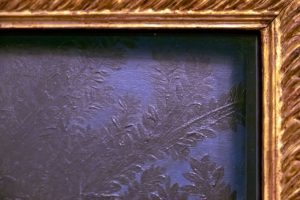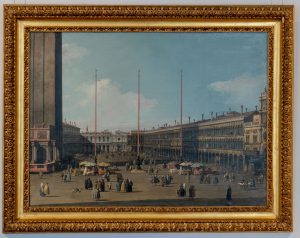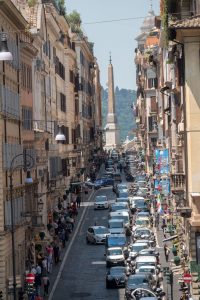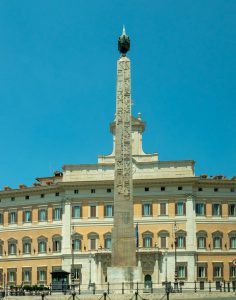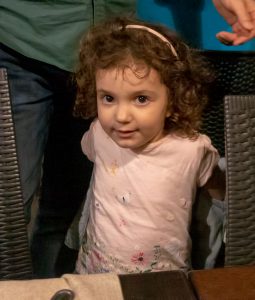TODAY’S TOURING
It was quite the day. We started with a traditional Italian breakfast – drinking a strong espresso at the neighborhood local bar, while standing. We each added a chocolate croissant. There is a process for the morning espresso. One prepays for the items and gets a receipt. You then present the receipt to the barman for the order. At our local bar, there was only one person in the bar,so it was a simple process. Our timing was good. Immediately after we placed our order, a gaggle of Italian businessmen placed their espresso orders.
We then took a taxi to Palazzo Barberini to tour the museum and the palazzo. I photographed the highlights and a few of our favorite art pieces. As long as a flash is not used, one can take photos of the art. After the museum, we took a taxi to Tazzo d’Oro for coffee. Along the way, we saw several obelisks, a memorial wreath to people killed by the Nazi’s in WWII, and Trajan’s Column. When we reached Tazzo d’Oro, we searched for the tables to sit and enjoy the coffee. It was a challenge. We had difficulty finding the room and later learned it was locked. I schmoozed the person who appeared to be the head of the coffee roasting. Eventually, he rounded up someone to unlock the room and take eur order for two (2) granitas. When we entered the room, the air conditioner was turned on and we had the room to ourselves. Tazzo d’Oro has the best traditional granitas in Rome; made by hand, no granita machine. We enjoyed our granitas in the luxury of our own private room. It was truly a Stevie World adventure.
We had dinner with my other Rome cousins: Rosanna Dattilo, her husband Andrea, and their daughter Maddalena. The last time we saw them, Maddalena was one month old. Maddalena is now three (3) years old. We had a lot to catch up.
REFERENCES
Plazzo Barberini (Lonely Planet)
Commissioned to celebrate the Barberini family’s rise to papal power, Palazzo Barberini is a sumptuous baroque palace that impresses even before you clap eyes on the breathtaking art. Many highprofile architects worked on it, including rivals Bernini and Borromini; the former contributed a large square staircase, the latter a helicoidal one. Amid the masterpieces, don’t miss Pietro da Cortona’s Il Trionfo della Divina Provvidenza (Triumph of Divine Providence; 1632–39), the most spectacular of the palazzo ceiling frescoes in the 1st floor main salon. Other must-sees include Hans Holbein’s famous portrait of a pugnacious Henry VIII (c 1540); Filippo Lippi’s luminous Annunciazione e due devoti (Annunciation with two Kneeling Donors); and Raphael’s La Fornarina (The Baker’s Girl), a portrait of his mistress, who worked in a bakery in Trastevere. Works by Caravaggio include San Francesco d’Assisi in meditazione (St Francis in Meditation), Narciso (Narcissus; 1571–1610) and the mesmerisingly horrific Giuditta e Oloferne (Judith Beheading Holophernes; c1597–1600).
Caffè Tazza d’Oro (Rick Steves)
This is one of Rome’s top coffee shops, dating back to the days when this area was licensed to roast coffee beans. Locals come here for a shot of espresso or, when it’s hot, a refreshing granita di caffè con panna (coffee and crushed ice with whipped cream).





